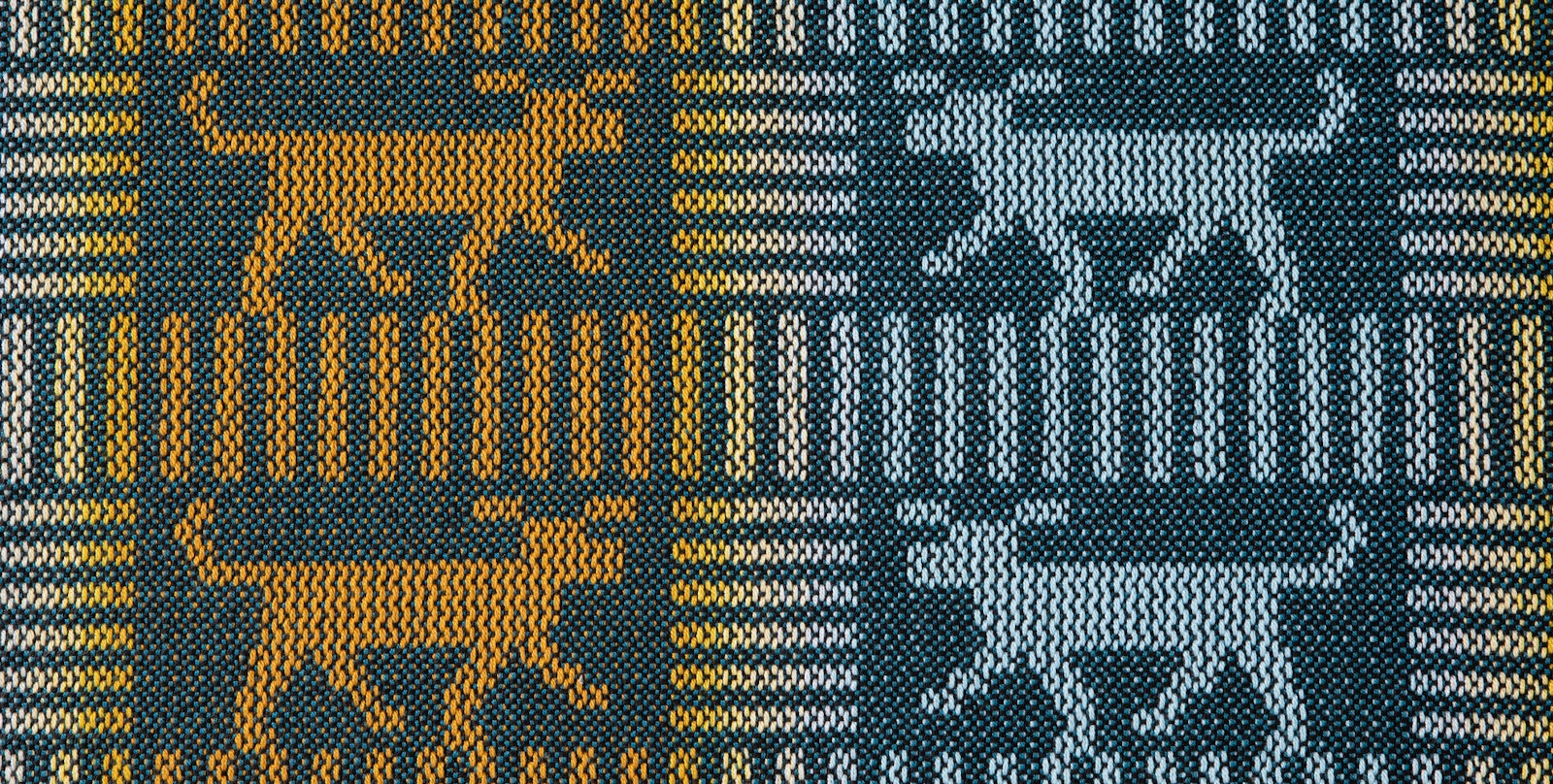We are in bluelines right now for the November/December 2021 issue of Handwoven. If you are unfamiliar with the term (as I would be if I didn’t have this job), back in the day, blueline proofs were photographic proofs of magazine pages from negatives where all colors were shown in blue (or another color). These proofs were for checking accuracy before plates were made. They were the editors’ last chance to make corrections. These days, “blueline proofs” are actually PDFs, but during bluelines, a group of editors pours over an issue in its entirety, looking for errors that are embarrassing. It’s really difficult to ignore errors that don’t fit that description, but this is not the time to notice that you used the same word three times in one paragraph or didn’t use a comma when you might have. Rather, it is the time to find authors’ names that are misspelled or missing illustrations that would make a project impossible to weave.

Jon Porch’s Absinthe scarf was another project from Handwoven September/October 2021 that was beautifully designed and woven, but I found myself checking and rechecking the spelling of the project’s title.
I was thinking this morning about how we run bluelines in our head as we weave. For instance, some mistakes I can live with: one too many ends in a hemstitching bundle, a beat that isn’t always consistent, or a little-bit-wonky selvedge. Other errors make me nuts: a skipped dent, a mis-threaded end, a repeat that doesn’t match the other repeats, and skips in the weft. You probably have your own error threshold. It’s the embarrassing ones that we as a community have the tendency to point out when we show others our work. We don’t say, “Look how beautiful this scarf is and how I got iridescence by carefully placing the colors.” Instead, we mention the fact that we couldn’t keep our beat steady or forgot the last third of a repeat.

These Velvet Loveys by Margaret Stump from Easy Weaving with Little Looms Holiday 2021 are an example of well-designed and well-executed designing, weaving, and sewing, but we debated whether they were “loveys” or “lovies.”
Except for doing my best to keep any one else’s weaving errors out of Handwoven’s and Little Looms’ photography, I’d like to think that I look at other fiber artists’ work with a less critical eye than when looking at my own. I‘m sure I’ll continue to run bluelines in my head as I weave, but starting now, I am going to make a concerted effort to look at other weaving for what is wonderful about it, whether it is color selection, design, or simply a job well done. In other words, I am going to celebrate handweaving with all of its idiosyncrasies that come from being done by imperfect humans.
That’s my new-found resolution—well, that and making an effort to stop telling people what is wrong with my own finished pieces.
Weave well,
Susan

